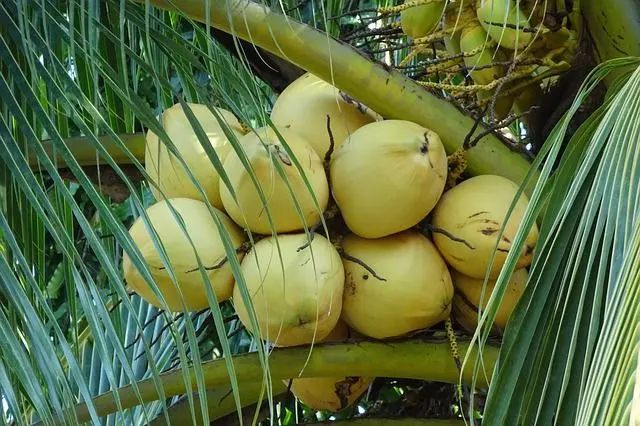Who doesn’t want to have a tall palm tree in their garden in a short time? Well, I’m not going to deceive you: the truth is that many people want just that since one of the beliefs that people tend to hold back when it comes to buying a specimen is that roots can break pipes and soil. But the only thing they are capable of lifting is the soil, and perhaps the pavement that is not well made. This is our fast-growing palm trees
Now, if you want to acquire one and you are one of those who wonder which are the fast-growing palms, we are going to tell you their names.
Table of Contents
Archontophoenix maxima
Archontophoenix maxima is the largest of the Archontophoenix genus, since it can measure up to 98 ft (30 m) in height (the others, such as the Archontophoenix alexandrae or the Archontophoenix cunninghamiana, stay at 66-82 ft (20-25 m). Despite its height, its trunk always remains thin, with a thickness of only 12” (30 cm). The leaves are pinnate, and long up to 16ft (5 m).
With a fast growth (about 16”/year (40 cm/year), and that also does not cost much to him to adapt to the sun if it is accustomed little by little. However, it needs frequent watering. It supports up to 28.4 °F (-2ºC), maybe 26.6 °F (-3ºC) if it is protected.
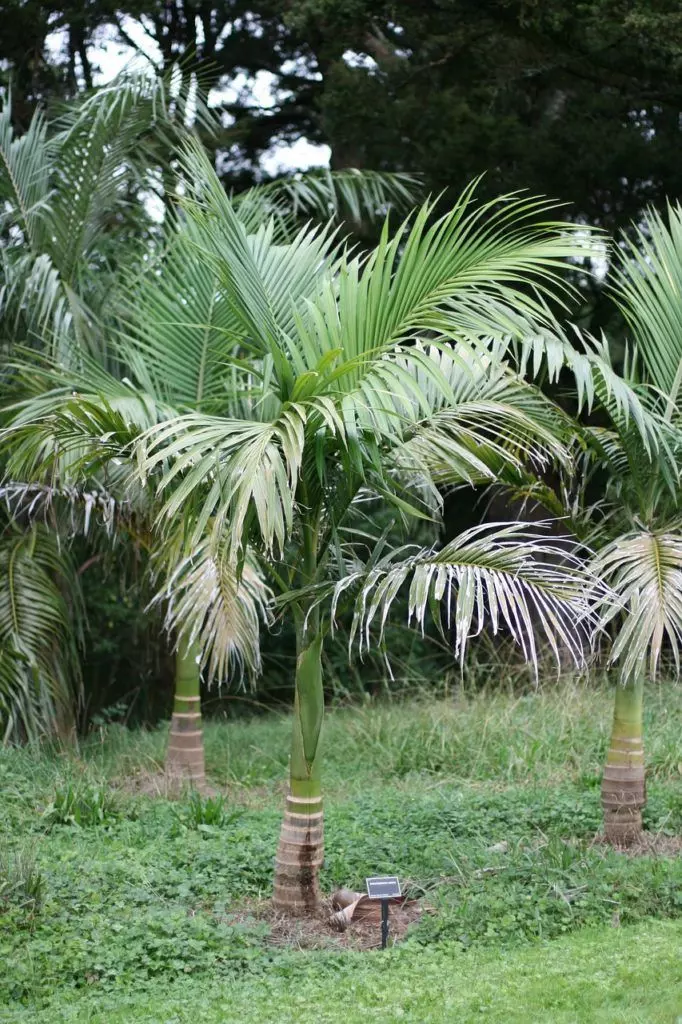
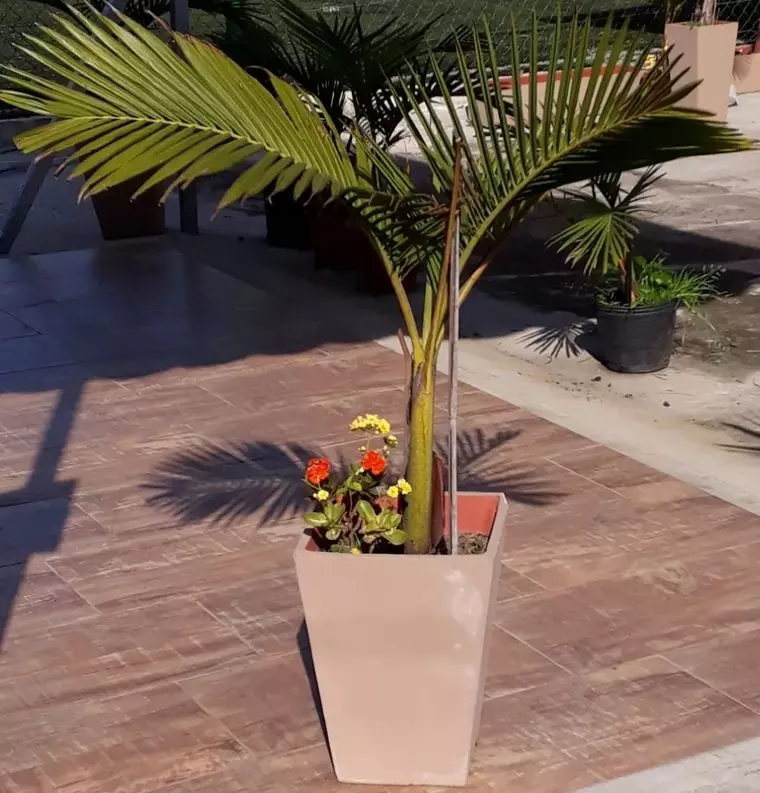
Palm Trees: Cocos nucifera
The coconut tree is the tropical palm par excellence. It is one of the few that can live on the beaches without suffering any damage. It reaches a height of 33 – 66 ft (10 – 20 m), and its trunk does not get thicker than about 12” – 16” (30 – 40 cm). The leaves are pinnate and very long, measuring up to 16 ft (5 m).
In the temperate regions, it is usually cultivated a lot as a houseplant, but it is difficult to get it to survive because it needs high environmental humidity, temperatures above 64.4°F (18ºC), and abundant light. When the climate accompanies and it is had in the soil, it grows to a rate of about 16” – 24” (40 – 60 cm) per year.
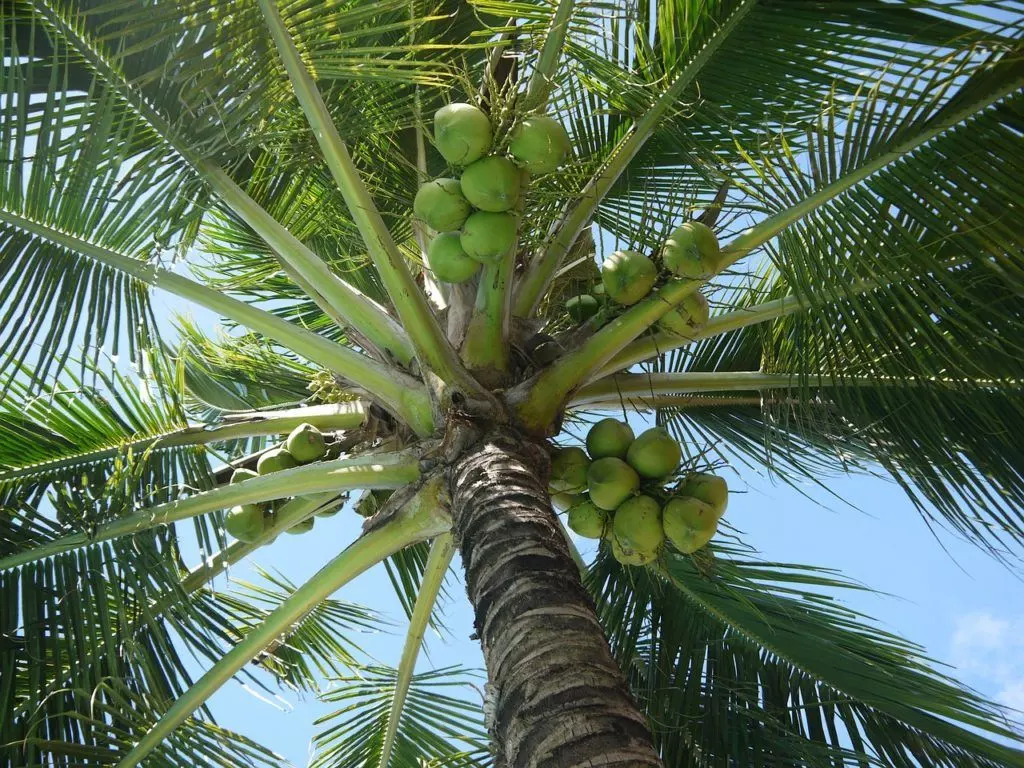
Palm Trees: Dypsis lutescens
Dypsis lutescens, known as yellow palm or areca (care: not to be confused with the palms of the genus Areca), is a tropical plant with several trunks that reach a height of 20 – 40 ft (6 – 12 m), with a thickness of 8” (20 cm) at most each. Its leaves are pinnate, about 7 – 10 ft (2 – 3 m) long, so it takes up less space than other species. As for the growth rate, if conditions are favorable, it grows about 12” – 16” (30 – 40 cm) per year.
It needs a place where it can be shaded when young, although it can get used to the sun as it gains height as long as the environmental humidity is high. The climate must be mild, without frost, or very, very weak.

Palm Trees: Phoenix dactylifera
The date palm is a palm tree with one or more trunks of about 12” – 20” (30 – 50 cm) in diameter that reaches a height of 82 – 98 ft (25 – 30 m). The leaves are pinnate and thorny, or glaucous color and with a length of 16 ft (5 m). As a curiosity, you should know that it is the one that produces the best tasting dates.
It resists drought very well, as well as warm and temperate climates. It can withstand frosts of up to 24.8°F (-4ºC) without suffering any damage and grows about 16” – 24” (30 – 40 cm) per year.
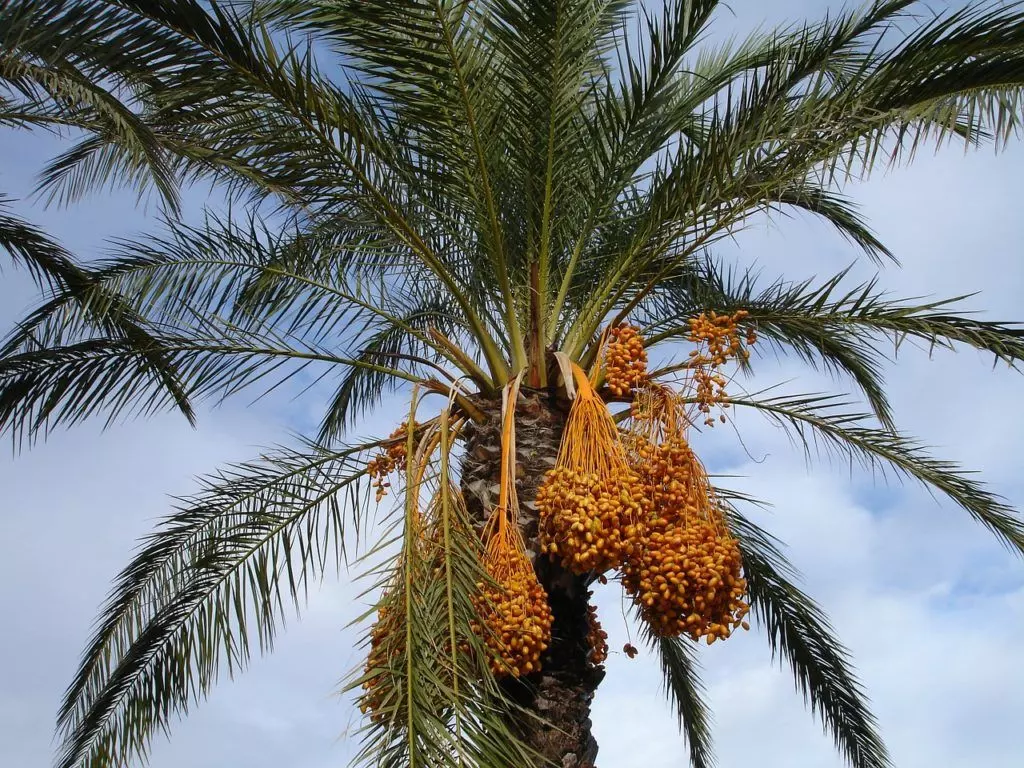
Roystonea regia
The Cuban royal palm is a wonderful tropical plant with pinnate leaves that reaches a height of 82 ft (25 m) but can reach 131 ft (40 m). Its trunk has a diameter of up to 24” (60 cm), and its leaves are up to 20 ft (6 m) long. When the climate is warm, it grows at about 16” (40 cm) per year.
The disadvantage is that it does not support frosts, perhaps even 30.2°F – 28.4°F (-1 or -2ºC) once it reaches being size (10 ft (3 m or so) and is in an area protected from the wind.
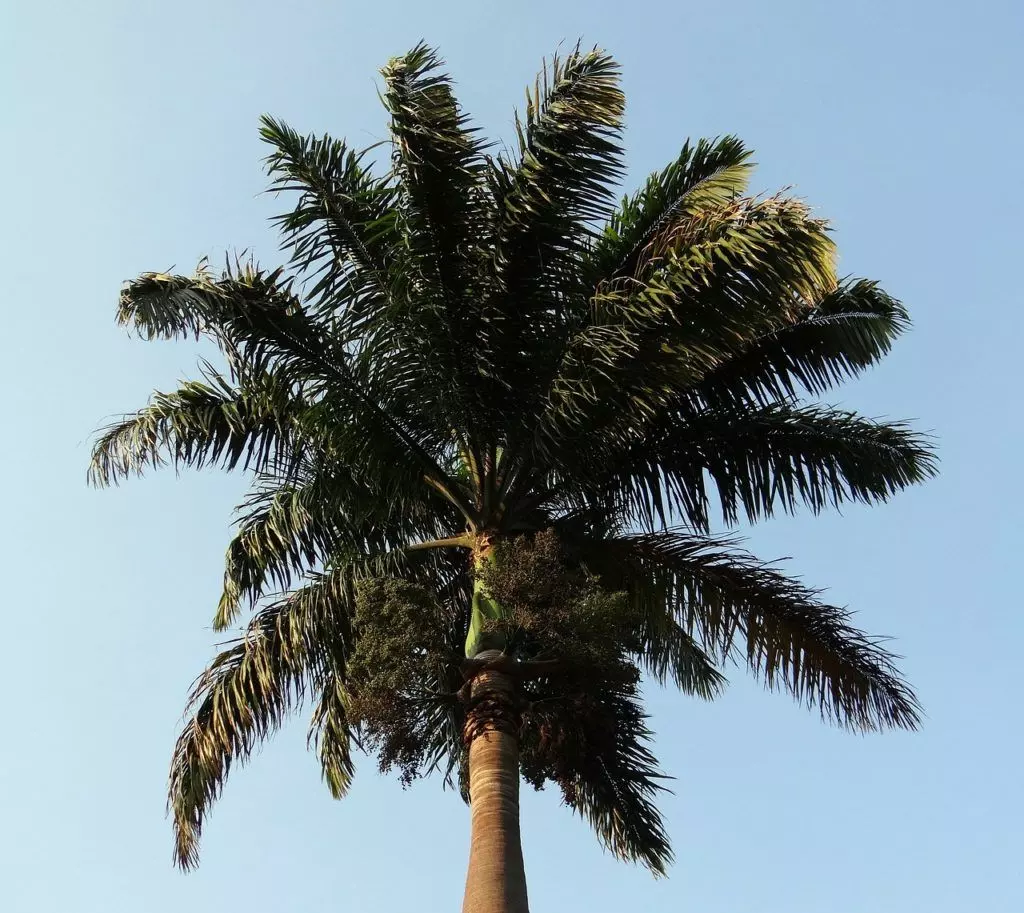
Syagrus romanzoffiana
The queen palm or cocos palm is a very elegant plant that reaches a height of 82 ft (25 m), with a trunk of up to 24” (60 cm) at its base. Its feathery appearance and ease of cultivation have made it one of the most interesting. Besides, it can grow about 16” – 20” (40 – 50 cm) per year.
And, do you know what it needs? Nothing but fertile soil, with good drainage, occasional watering, and sunshine. It resists the frost up to 17.6°F (-8ºC).
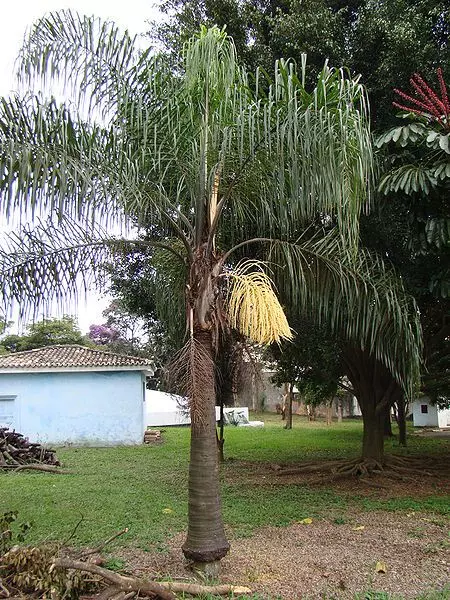
Washingtonia robusta
It is the most common. It is known by the name of Mexican fan palm, and as its name indicates it has fan-shaped leaves. Its trunk measures up to 115 ft (35 m) high by about 14” – 16” (35 – 40 cm) thick at its base.
It can grow at a rate of 3.2 ft (1 m) per year if conditions are suitable; although most often it grows at a rate of 20” – 24” (50 – 60 cm) per year. It is resistant up to 24.8°F (-4ºC).
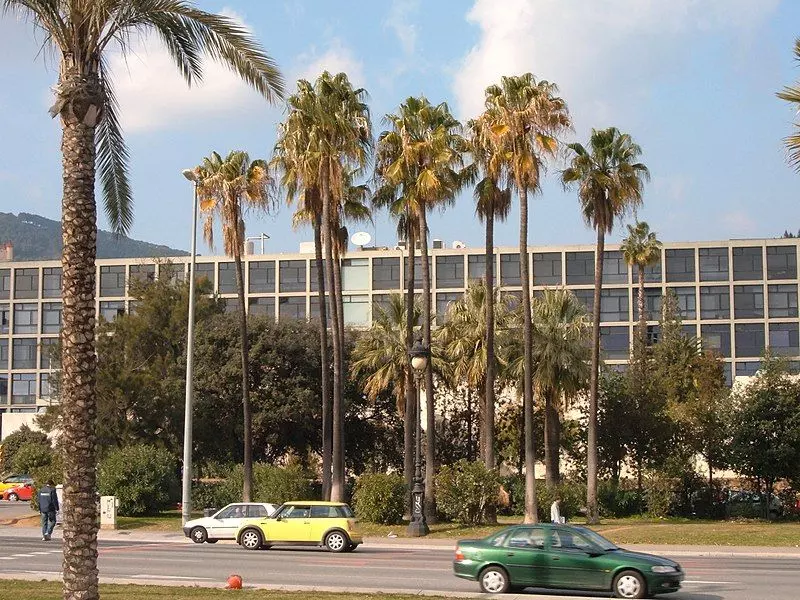
Fertilizer for Palm Trees
Palms in general do not require nutrient-rich soil. Nevertheless (as it happens with the irrigation) if you fertilize every year, they will be grateful growing quickly and offering palms of intense green color.
If the soil is poor and bad you will have to fertilize with more reason. In rainy climates and with sandy soil there is more loss by washing minerals in-depth, out of reach of the roots, so you must provide a greater amount than in clay soil and divide it into several times a year.
The fertilizer can be done by choosing an organic or mineral one.
– Organic Fertilizer
Bring around the palm tree 2.2 lb. (1 kg) of made manure, mulch, peat, etc., and mix it lightly with the soil using a hoe. Just bury it a little bit, do not dig more than 2” (5 cm) deep because you would damage the superficial roots. This organic matter will provide nutrients as it decomposes and will improve the structure of the soil.
– Mineral Fertilizer
In spring, it provides about 1.8 oz (50 g) per palm tree of slow-release mineral fertilizer or a complex fertilizer 15-15-15. Another option is to spread the fertilizer 2 or 3 times throughout the year, especially on sandy soils.
Spread the fertilizer granules over the shaded area, not just attached to the trunk. Incorporate it lightly into the soil and water profusely.
Do all Palm Trees Produce Coconuts?
Not all palm trees give coconuts, some give dates fruits (dates) only. The best known species that gives coconuts is Cocos nucifera.
